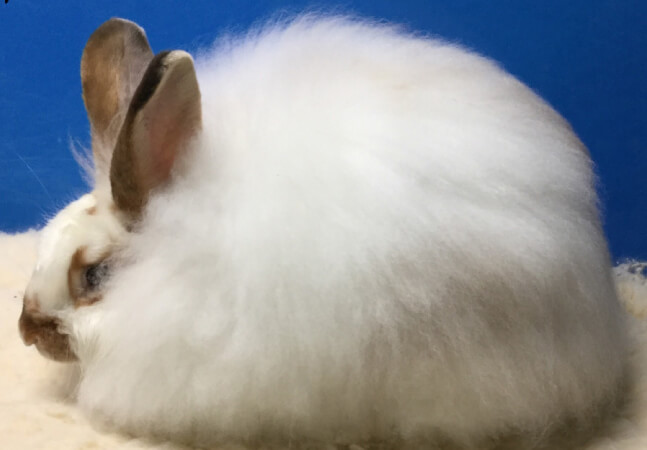- COUNTRY OF ORIGIN: United States
- YEAR RECOGNIZED: 1956
- USES: Show, fur, meat
- WEIGHT: 11 pounds (5 kg) max., senior does
- BODY TYPE: Commercial
- FUR TYPE: Rollback; Satin type; silky, fine, very dense and interspersed with lustrous guard hairs, creating sheen and resiliency
Color:
Black, blue, Californian, chinchilla, chocolate, copper, otter, red, Siamese, white
Broken Group — any recognized breed variety in conjunction with white
THE CONSEQUENCES OF INBREEDING, including gene mutations, are hard to determine in advance. To wit: Walter Huey was attempting to improve his Havana Rabbits through inbreeding when the first satin coats appeared on some of his stock in 1934. Harvard University geneticists found that fur length had not been affected, but they also found that the texture and sheen of the Havana coats had — in a wondrous way. The Satin fur type had been born, quite accidentally.
Within two years the Satin Club was formed. By the mid-1950s, an avalanche of “satinized” varieties had been recognized and the Satin breed had been upsized and refined, clearly distinguishing it from the Havana. The Satin effect is the by-product of hair sheaths with glasslike clarity. Each translucent sheath reflects light, creating the sheen for which the Satin breeds are renowned.
The standard Satin, a medium-to-large rabbit in a meat-type body, is a multipurpose breed, noted for its show, table, and fur qualities. The compact Mini Satin is a smaller and more recent addition to the rabbit fancy.

